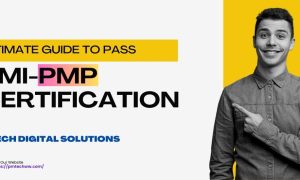Introduction
Welcome to the ultimate guide on conducting a SWOT analysis (Strengths, Weaknesses, Opportunities & Threats)! Whether you’re a small business owner, a marketing professional, or an aspiring entrepreneur, this comprehensive guide of swot analysis will equip you with the knowledge and tools to uncover your competitive edge.
A SWOT is a powerful strategic planning framework that allows you to assess your organization’s internal strengths and weaknesses, as well as the external opportunities and threats you face. By meticulously examining these aspects, you can develop informed strategies to capitalize on your strengths, mitigate weaknesses, exploit opportunities, and protect your business from potential threats.
In this guide, we will walk you through the step-by-step process of conducting a thorough SWOT analysis. From gathering relevant data and identifying key factors to analyzing and interpreting the results, we will cover it all. Additionally, we will provide practical tips and examples to help you apply these insights to your own business or organization.
Unlock your competitive edge and gain a deeper understanding of your competitive landscape with our comprehensive guide to conducting a this analysis. Let’s get started!
Understanding the Four Elements of SWOT Analysis
A SWOT consists of the analysis of four key elements: strengths, weaknesses, opportunities, and threats. Each element focuses on a different aspect of your business and helps you gain a comprehensive understanding of your competitive position. Let’s delve into each element in detail.
Strengths: Identifying and Leveraging Your Internal Advantages
The strengths component of a SWOT revolves around identifying the internal factors that give your organization an advantage over competitors. These could include unique selling propositions, strong brand reputation, talented employees, or proprietary technology. By recognizing and leveraging these strengths, you can position your business for success.
When identifying your strengths, consider both tangible and intangible assets. Tangible assets may include physical resources, such as equipment or inventory, while intangible assets may include intellectual property, patents, or customer loyalty. It’s essential to be honest and objective during this process to truly understand your competitive advantages.
Once you have identified your strengths, the next step is to leverage them effectively. This could involve highlighting these strengths in your marketing messages, focusing on product or service differentiation, or capitalizing on your unique expertise. By leveraging your strengths, you can differentiate yourself from competitors and carve out a strong market position.
Weaknesses: Recognizing and Addressing Internal Limitations
Just as it’s important to identify and leverage your strengths, it’s equally crucial to recognize and address your weaknesses. Weaknesses refer to the internal factors that put your organization at a disadvantage compared to competitors. These could include limited resources, outdated technology, poor customer service, or lack of brand awareness.
To identify your weaknesses, you need to conduct an honest assessment of your organization. This may involve analyzing financial data, conducting employee surveys, or soliciting feedback from customers. By acknowledging your weaknesses, you can take proactive steps to address them and improve your overall performance.
Addressing weaknesses requires a strategic approach. It may involve investing in training programs to upskill employees, upgrading technology infrastructure, or improving operational processes. The goal is to minimize the impact of weaknesses on your business and position yourself for long-term success.
Opportunities: Identifying External Factors for Growth and Success
Opportunities are external factors that have the potential to benefit your organization. These could include emerging market trends, changes in consumer behavior, technological advancements, or gaps in the market that you can exploit. Identifying and capitalizing on opportunities can help your business grow and thrive.
To identify opportunities, you need to stay informed about industry trends, competitor activities, and market dynamics. Conduct market research, analyze consumer behavior, and keep an eye on emerging technologies. By doing so, you can spot potential opportunities and position your business to take advantage of them.
Once you have identified an opportunity, it’s crucial to develop a strategic plan to exploit it. This may involve launching new products or services, entering new markets, or forming strategic partnerships. By capitalizing on opportunities, you can stay ahead of the competition and drive sustainable growth.
Threats: Recognizing Potential Risks and Challenges in the Competitive Landscape
Threats refer to external factors that can hinder your organization’s success. These could include new competitors entering the market, changes in regulations, economic downturns, or shifts in consumer preferences. Recognizing and addressing threats is essential to protect your business and ensure long-term viability.
To identify threats, you need to conduct a thorough analysis of the competitive landscape. Keep an eye on industry trends, monitor competitor activities, and stay informed about changes in the regulatory environment. By doing so, you can anticipate potential threats and develop strategies to mitigate their impact.
Mitigating threats requires a proactive approach. This may involve diversifying your product or service offerings, strengthening relationships with suppliers, or developing contingency plans for potential disruptions. By addressing threats head-on, you can protect your business and maintain a competitive advantage.

Conducting a SWOT Analysis: Step-by-Step guide
When conducting a SWOT analysis, it’s crucial to identify and evaluate the potential threats that your business or organization may face in the competitive landscape. These threats can come from various sources, such as new entrants to the market, changes in consumer behavior, evolving industry regulations, or emerging technologies.
To recognize potential threats effectively, start by researching your industry and staying updated on the latest trends and developments. Analyze your competitors and identify any strategies they might be implementing that could pose a threat to your business. Additionally, consider conducting a PESTLE analysis to evaluate the external factors that could impact your organization.
Once you have identified potential threats, it’s important to assess their potential impact and likelihood of occurrence. This will help you prioritize and focus on the most critical threats that require immediate attention. By understanding and acknowledging these threats, you can proactively develop strategies to mitigate their impact and protect your business.
Remember, threats are not always negative. They can also present opportunities for growth and innovation. For example, a new technology disrupting your industry might be a threat, but it can also be an opportunity to embrace digital transformation and gain a competitive advantage. It’s essential to approach threats with a proactive mindset and be prepared to adapt and evolve.
SWOT Analysis: Identifying and leveraging your internal advantages
Now that we understand the four elements of a SWOT, let’s dive into the step-by-step process of conducting a comprehensive analysis. Following these steps will ensure that you gather the necessary data, analyze it effectively, and derive actionable insights.
Main Steps: Before Diving into the SWOT Analysis
Step 1: Define the Scope and Objectives
Before you begin your analysis, it’s important to define the scope and objectives. Determine what aspects of your business you want to assess and what specific goals you hope to achieve through the analysis. This will help you stay focused and ensure that your analysis is targeted and meaningful.
Step 2: Gather Relevant Data
To conduct a thorough SWOT analysis, you need access to accurate and up-to-date data. Collect information about your organization’s internal operations, market conditions, competitor activities, and regulatory environment. This data will serve as the foundation for your analysis and help you make informed decisions.
Step 3: Identify Key Factors
Once you have gathered the necessary data, it’s time to identify the key factors that will form the basis of your analysis. These factors should align with the strengths, weaknesses, opportunities, and threats framework. Consider both quantitative and qualitative factors to gain a comprehensive understanding of your business.
Step 4: Analyze and Interpret the Results
With the key factors identified, it’s time to analyze and interpret the results. Use tools such as SWOT matrices, charts, or graphs to visualize the data and gain insights. Look for patterns, trends, and connections between different factors. This analysis will help you identify strategic implications and prioritize your actions.
Step 5: Develop Strategies and Action Plans
Based on your analysis, develop strategies and action plans to capitalize on your strengths, address your weaknesses, exploit opportunities, and mitigate threats. These strategies should be specific, measurable, achievable, relevant, and time-bound (SMART). Assign responsibilities, set timelines, and establish metrics to track progress.
Step 6: Implement and Monitor
Once you have developed your strategies and action plans, it’s time to implement them. Execute your plans, monitor progress, and make adjustments as needed. Regularly track key performance indicators (KPIs) to ensure that your strategies are delivering the desired outcomes. Stay agile and be prepared to adapt to changing circumstances.

Weaknesses: Recognizing and addressing internal limitations
After conducting your SWOT analysis, it’s important to analyze and prioritize your findings. Not all strengths, weaknesses, opportunities, and threats are created equal. Some may have a more significant impact on your business than others. By prioritizing your findings, you can focus your resources and efforts on the most critical areas.
Start by assessing the potential impact and likelihood of each factor. Consider the internal capabilities and resources required to address them. Use a matrix or scoring system to rank each factor based on its importance and urgency. This prioritization will help you allocate resources effectively and develop an action plan.
Opportunities: Identifying external factors for growth and success
The true value of a SWOT lies in its ability to inform strategic decision-making. By leveraging the insights gained from your analysis, you can develop and implement strategies that give you a competitive edge. Here are some practical tips for leveraging your competitive edge:
1. Capitalize on your Strengths:
Use your strengths to differentiate yourself from competitors and position yourself as a market leader. Highlight these strengths in your marketing messages and focus on delivering superior value to your customers.
2. Address Weaknesses:
Take proactive steps to address your weaknesses and improve your overall performance. Invest in training programs, upgrade technology infrastructure, and enhance operational processes to minimize the impact of weaknesses.
3. Exploit Opportunities:
Develop strategies to exploit the opportunities identified in your analysis. Launch new products or services, enter new markets, or form strategic partnerships to capitalize on emerging trends and gaps in the market.
4. Mitigate threats:
Develop contingency plans and strategies to mitigate the impact of threats. Diversify your product or service offerings, strengthen relationships with suppliers, and stay agile to adapt to changing market conditions.
By implementing these strategies, you can leverage your competitive edge and position your business for long-term success.
Threats: Recognizing potential risks and challenges in the competitive landscape
A SWOT analysis is not a one-time exercise. To stay competitive in a dynamic business environment, it’s crucial to regularly update and revisit your analysis. Market conditions change, competitors evolve, and new opportunities and threats emerge. By regularly reassessing your strengths, weaknesses, opportunities, and threats, you can stay ahead of the curve and adapt your strategies accordingly.
Make SWOT analysis an integral part of your strategic planning process. Conduct periodic reviews, track progress, and make adjustments as needed. By doing so, you can ensure that your business remains agile, resilient, and well-prepared to navigate the ever-changing competitive landscape.
Unlock your competitive edge today by conducting the SWOT analysis. Follow the steps outlined in this guide, leverage your insights, and develop strategies that position your business for success. Remember, a SWOT analysis is not just a planning tool; it’s a powerful framework that can help you uncover your competitive edge and drive sustainable growth.
Now that we have the ultimate guide to conducting a SWOT analysis, it’s time to put your newfound knowledge into action. Start analyzing, strategizing, and unlocking your competitive edge.
Leveraging your competitive edge: Implementing strategies based on your SWOT analysis
After completing the analysis of SWOT elements, it’s time to analyze and prioritize your findings. Start by reviewing each element of the SWOT matrix and identifying the key insights and implications. Look for patterns, connections, and relationships between the different elements.
Consider the following questions during your analysis:
– How do your strengths align with the opportunities available in the market?
– Can you leverage your strengths to overcome your weaknesses?
– Are there any threats that can be turned into opportunities?
– How can you mitigate your weaknesses and protect yourself from potential threats?
Once you have analyzed your findings, prioritize them based on their importance and impact on your business. Identify the critical areas that require immediate attention and develop strategies to address them. This will help you focus your resources and efforts on the most significant opportunities and challenges.
Remember, a SWOT is not a one-time exercise. It should be an ongoing process that is regularly reviewed and updated. Market conditions, customer preferences, and industry dynamics can change rapidly, and it’s crucial to stay agile and adapt to these changes. By continuously revisiting and revising your SWOT analysis, you can stay ahead of the competition and maintain your competitive edge.
Benefits of a SWOT Analysis
Conducting a SWOT analysis offers several key benefits:
-
- Improved Decision-Making: By understanding your strengths, weaknesses, opportunities, and threats, you can make more informed decisions that align with your business goals.
-
- Identify Competitive Advantage: A SWOT analysis helps you uncover your competitive edge by highlighting areas where your business excels.
-
- Strategic Planning: Armed with the insights from a SWOT analysis, you can develop effective strategies to capitalize on opportunities and address weaknesses.
-
- Enhanced Risk Management: Understanding potential threats allows you to proactively manage risks and minimize their impact on your business.
Conclusion: The importance of regularly updating and revisiting your SWOT analysis
Now that you have conducted a thorough SWOT analysis and prioritized your findings, it’s time to leverage your competitive edge and implement strategies that capitalize on your strengths, mitigate weaknesses, exploit opportunities, and protect your business from threats.
Remember, a SWOT analysis is not a one-time exercise. It should be an ongoing process that is regularly reviewed and updated. Market conditions, customer preferences, and industry dynamics can change rapidly, and it’s crucial to stay agile and adapt to these changes. By continuously revisiting and revising your SWOT analysis and implementation, you can enhance your competitive edge, drive growth, and achieve your business objectives.




